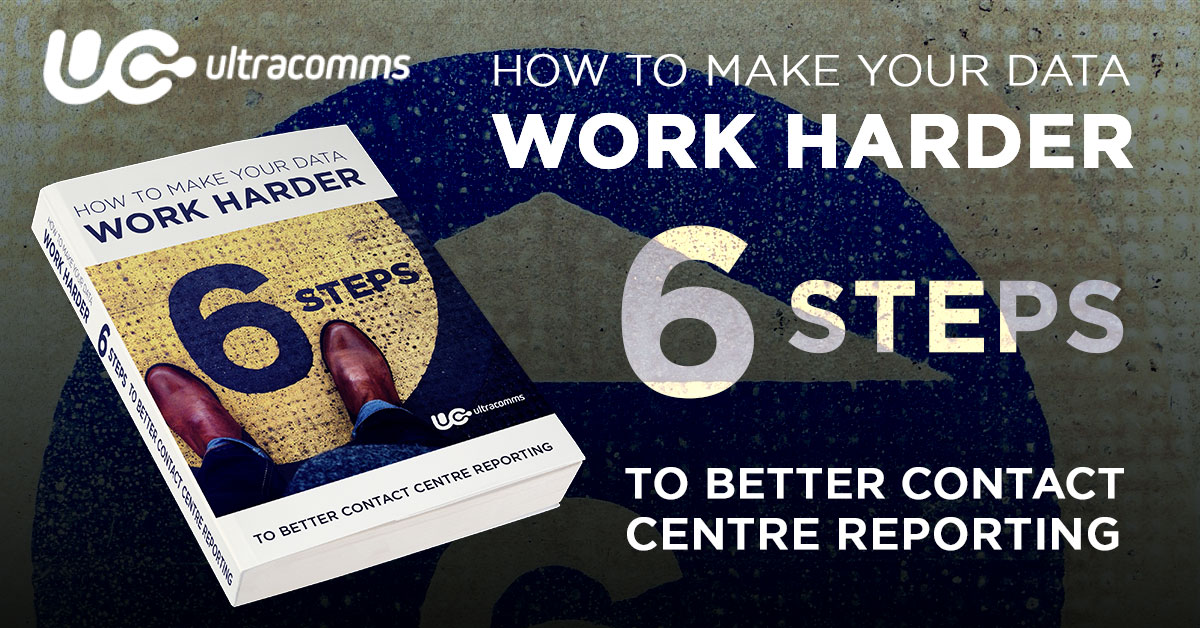In our last blog, we looked at which platforms can give contact centres real operational visibility, and offered some advice on how those at the helm could use the insights from these data sources to identify training needs for agents, bulletproof their customer experience, and overall become more agile and reactive in order to get the best outcomes for customers and prospects.
Once you have got the right systems in place – ie systems which are capable of giving you the insights you need – the next thing to do is tighten up your reporting practices.
One of the primary pitfalls of contact centres investing in transformative solutions is thinking that their work is done once their systems are up and running. But the truth is, this is where the real work starts.
Reporting is all-too often treated arbitrarily as a box-ticking exercise. A means of producing shiny, impressive graphs and charts to add some colour to the wallboards.
For you to unlock the real transformative power of contact centre solutions like speech analytics and omni-channel, you need to know how to make your data work harder for you, and tailor your reporting practices so that they align with your unique business interests and objectives.
Here are 6 steps you can take to turn your reporting data into impactful, meaningful metrics that can drive real change within your team:
1. Don’t overcomplicate itWe put this one first because it is probably the most common fallacy of reporting practices. More does not always mean better.
The modern suite of contact centre systems can be so advanced and complex that we are often presented with a morass of reporting data that we simply don't need. So take some time to separate the wheat from the chaff.
If it's not a helpful or necessary piece of information, take it out. Every piece of data on your report should tell you something. If the data itself doesn't suggest something about what your customers or agents are going through, the chances are it is just excess weight.
Different statistics will relate to each other in a way that should unlock some understanding of the actions of your agents and customers. It should unveil some root causes of certain behaviours or operational sticking points.
Once you've tinkered around a bit and refined a lean collection of data sets, be sure to arrange and visualise them in a clear, logical fashion, so readers can easily pick out the meaning behind it all.
You can't evaluate the effectiveness of your performance without a standard to measure it against.
It sounds obvious, but this is another instance of contact centre teams hoping their automated reporting information will unlock those actionable insights all by itself.
Set some performance standards that you never want to fall under, as well as some aspirational targets to aim for, and compare your stats and KPIs with these every time to see where you're at.
It's not only important to simplify and streamline your reporting, but also important that the data you do include isn't just a series of static numbers or averages.
The goal here is to gain a holistic picture of not just how your team is doing, but how it's doing compared to previous months and quarters, and how it will do in the future if your current habits and practices continue.
This means looking at the spread of data. Contextualise what is in front of you. Look at the entirety of the bell curve rather than just the peaks and troughs that stand out. Take outliers into account as well.
Making that effort to be a bit more cognisant of all the moving operational parts as they change, develop, and fluctuate, can unlock some really golden information.
Customisable, dashboards can work wonders when it comes to improving efficiencies and giving contact centre managers a live, at-a-glance representation of how your team lives and breathes.
If your agents are a boxer, the real-time dashboard is the team in their corner. But it can't tell you where you need to cover up or where you need to attack without being configured to your specifications first.
There is no cookie-cutter approach here. You need to play around with your platforms so that they are tailored to fit your business requirements.
Try and a number of reports onto the same screen, so that you can monitor things such as agents, queues and active contacts in real time. This will allow you compare different groups of agents with inbound customers, and move agents across channels as necessary to meet live surges in demand.
With historical reports, be sure to customise different metrics for different teams and departments – remember what we said earlier. If it's data that doesn't matter to the reader, strip it out.
Providing contact centre agents with individual reports of their own performance is a great way to motivate your team, and depending on your office culture, even stir up a bit of healthy competition!
Obviously it helps to have those team-wide communications where you all look to address common goals, but it's also important to give your agents some individual attention, and a sense of autonomy over their own progress and development.
Try giving them performance reports tailored specifically to them, with a summary of their weekly or monthly performance, scored against a set of predetermined targets.
The best thing about this is it can help a sense of camaraderie, competition and a hunger to be better grow internally and organically, rather than it feeling like a top-down demand.
Finally, keep security and privacy regulations in mind at all times. Keep your data and reporting tools secure, and ensure your data is only ever visibly to those who should be allowed to see it.









